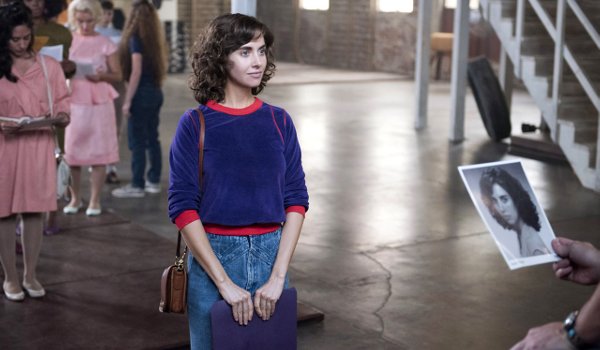As we steamroll towards Emmy season, Jorge will be diving into the pilot episodes for some of the Best Series nominees from now until the ceremony on September 17. This week, he steps into the ring for some gorgeous lady wrestling…

If a TV show has the Jenji Kohan seal (either as a creator or as an executive producer), there are several things you can expect from it: biting satire that effortlessly moves from dark comedy to emotional drama, a focus on female stories, and large ensembles.
GLOW, Netflix’s second big collaboration with Kohan after Orange Is the New Black (though here only in a producer capacity) is a perfect embodiment of these traits. Let’s take a look at how writer-creator’s for the hit comedy, Liz Flahive and Carly Mensch, introduce and establish the main characters that we will be following in this journey of self-empowerment and risky physical maneuvers...
GLOW
“Pilot”
Written by: Liz Flahive and Carly Mensch
[You can read the full script here.]
I’ve said it many times on this series: pilots have to to plenty of things at once and make them look effortless. They need to establish the world, the tone, the characters, and the start of multi-episode storylines that will hook the audience and make them want to come back. In shows with large ensembles like GLOW, it’s almost impossible to properly introduce every character in a way that portrays them fully. It’s almost always limited to portraying two or three main relationships, and small tastes of supporting characters that we hopefully will get to explore later.
The pilot of GLOW focuses on what arguably is the lead character, Ruth (Alison Brie), and the main relationship in her life that will also become her antagonist for the rest of the season, Debbie (Emmy nominee Betty Gilpin). But it also introduces other supporting players that add layers of depth to the world and tell us this will not be a two-person story.

***

The first scene of GLOW is one of the most outstanding teasers in recent memory, in which the ambition of Ruth’s acting career clashes with the way the industry relentlessly pushes her down, and that tells us everything we need to know about her. She is described as “looking strong, sexy, and in charge”, though we will later find out she feels anything but. It’s all an act. It’s very telling that the first thing we see about her is a performance.
On the other hand, we meet Debbie at a Jazzercise class that Ruth is late to; a place where women drop their guard to get sweaty. She is described as a “post-partum disaster” and “out of shape but clearly beautiful.” There is an immediate contrast between the first two impressions of these women, and this dichotomy (guarded versus vulnerable) is one that will be played between them all through the show.

***

***

The rest of the wrestling cast is first introduced as a "desperate" group, as the “Bad News Bears of 80s out-of-work actresses. All shapes, sizes, and ages.” It is not a long description, nor a necessarily detailed one, but it tells us everything about them. This is a diverse group of outcasts. Not the women we’re accustomed to see.
A couple of them get introductions of their own: Arthie Prekumar (“an Indian girl in scrubs”), and Cherry Jones (an “Afro-sporting bad-ass”). We don’t get to see much of them in the plot, but they serve as a tease that we will get to know these women further down the line, and help us fill in the blanks of this world beyond just Ruth and Debbie.
The last grand introduction of a main character is that of the only male lead. Just as with the two women, his entrance informs so much of who he is, and what sides of him we will be seeing, at least at first. “He’s cocky-charming, disheveled, and clearly coked up. A Hollywood director who hasn’t seen much of Hollywood lately.” Just like Ruth, his broken ambition is a defining trait that will push him forward; and that is the first thing he shows us.

It may be a cliché saying, but first impressions really do matter; especially in a television show in which the audience will be asked to invest in the lives of a group of people. The first impression we get will inform how we will relate to them. If used well, they can serve to either paint a clear picture, or build up an image that needs to be dismantled.
GLOW uses these first moments to let us know how these women move in the world, what they want, and what they are willing to do to get it. They are people that are defined by their ambition, their goals, and their agency. It is clear from their very first sentences. Not only are they gorgeous ladies, they are also determined.